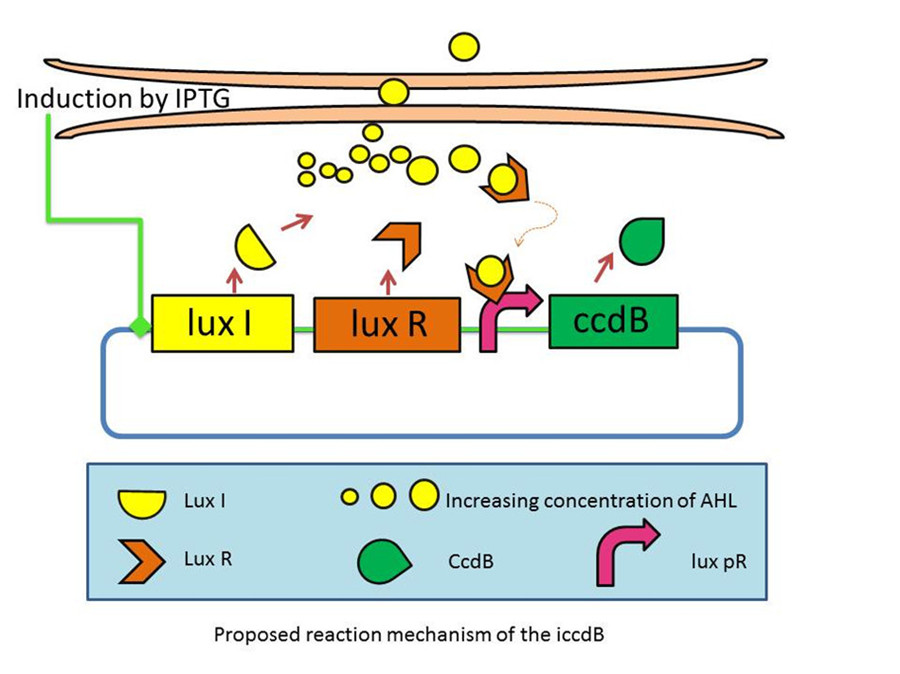Team:XMU-China/Project/Description
From 2011.igem.org
Project Description
i-ccdB: intelligent Control of Cell Density in Bacteria
We have developed a series of devices which program a bacteria population to maintain at different cell densities. We have designed and characterized the genetic circuit to establish a bacterial ‘population-control’ device in E. coli based on the well-known quorum-sensing system from Vibrio fischeri, which autonomously regulates the density of an E. coli population. The cell density however is influenced by the expression levels of a killer gene (ccdB) in our device. As such, we have successfully controlled the expression levels of ccdB by using RBSes of different strength and mutated luxR promoters (lux pr). We are working on builting up a database for a series of mutation sites and RBSes corresponding to different steady-state cell densities. An artificial neural network will be built to model and predict the cell density of an E. coli population. This work can serve as a foundation for future advances involving fermentation industry and information processing.

This circuit incorporates a mechanism for programmed death in respond to changes in the environment, and allows us to probe the design principles of its more complex natural counterparts.
reference
[1] Kempner E, Hanson F. Aspects of light production by Photobacterium fischeri[J]. Journal of Bacteriology, 1968, 95(3): 975-979.
[2] Fuqua WC, Winan SC, Greenberg E. Quorum sensing in bacteria: the luxR-luxI family of cell density-responsive transcriptional regulators[J]. Journal of Bacteriology, 1994, 176(2): 269-275.
[3] Baldwin T, Devine JH, Heckel, RC, Lin, JW, Shadel GS. The complete nucleotide sequence of the lux regulon of Vibrio fischeri and the luxABN region of Photobacterium leiognathi and the mechanism of control of bacterial bioluminescence[J]. Journal of Bioluminescence and Chemiluminescence, 1989, 4(1): 326-341.
[4] You L, Cox RS, Weiss R, Arnold FH. Programmed population control by cell-cell communication and regulated killing[J]. Nature, 2004, 428(6985): 868-871.
[5] Kampranis SC, Howells AJ, Maxwell A. The interaction of DNA gyrase with the bacterialtoxin CcdB: evidence for the existence of two gyrase-CcdB complexes[J]. Journal of Molecular Biology, 1999, 293(3): 733-744.
 "
"

